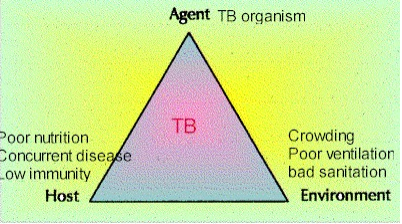The Social Determinants of Health for Tuberculosis (TB) and their Contribution to the Development of Tuberculosis (TB)
Social determinants of health are thought to include things like an individual’s environment at birth, where they reside as adults, at work, and as they age. As a contagious illness, tuberculosis (TB) is significantly impacted by a wide range of socioeconomic health variables. The first of several social determinants of health that may have an impact on health is housing overcrowding. MTB is spread by inhaling its germs and the air, which is where it lives. The probability of engaging in high-risk social activities, such as residing or working in a crowded, poorly ventilated environment, affects one’s likelihood of being exposed to MTB, among other things (Hargreaves et al., 2018). When a patient with Mycobacterium tuberculosis (MTB) coughs, sneezes, or breathes, the bacterium spreads throughout the air in the nucleus of tiny droplets.
The second social factor that influences health is food insecurity (Hargreaves et al., 2018). Malnutrition makes the body more susceptible to illnesses as a result of a poor diet. Poor income is a critical factor in influencing those who do not have access to primary health care due to financial limitations (Duarte et al., 2018). Another social component that may affect patients’ low socioeconomic status and, in turn, pharmaceutical non-compliance and poor treatment outcomes is the stigma associated with tuberculosis (TB) (Duarte et al., 2018). Fear of getting a stigmatization diagnostic is one of the many factors that lead to the pathogenesis of tuberculosis.
The Epidemiologic Triangle of Tuberculosis (TB)
Below is a summary diagram of the epidemiologic triangle that characterizes the spread of tuberculosis (TB).

Figure 1: Tuberculosis (TB) epidemiologic triangle
The causing agent, Mycobacterium tuberculosis, travels from person to person when microscopic droplet nuclei are released into the air during routine human interaction (The World Health Organization, 2019). If the virus particle nuclei are still in the air after the sick person has left, it is more probable that nearby people will become infected. Especially in crowded public spaces, Mycobacterium tuberculosis, the infectious disease agent that causes tuberculosis, travels fast from infected person to afflicted person through the air through breathing encounters (Duarte et al. 2018). A dangerous environment is a result of overcrowding, poor sanitation, homelessness, the criminal justice system, and inadequate ventilation. Healthcare professionals should receive special attention since they run the danger of contracting tuberculosis from exposure to hospital patients’ diseases (Duarte et al. 2018).
Our Advantages
Quality Work
Unlimited Revisions
Affordable Pricing
24/7 Support
Fast Delivery